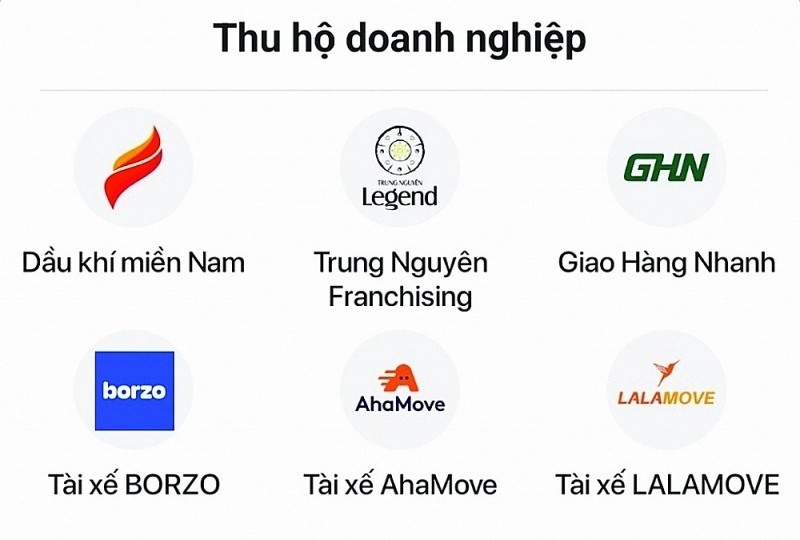VCN – To reform administrative procedures and increase state budget collection and payment services, and contribute to reducing customs clearance time, Customs is actively expanding the method of revenue collection for import and export by speeding up the pilot implementation of the tax payment model through intermediaries.
 |
| Taxpayers can directly make tax payment statements on the customs e-payment portal anytime, anywhere, by any means |
Benefits for many parties
According to Mr Tran Bang Toan, Customs has received 12 applications to participate in piloting payment intermediary services from service providers. However, most of the applications are incomplete, as required. Therefore, to ensure applications of enterprises and providers in the pilot implementation of intermediary payment services, the Customs agency suggested that enterprises and providers add and complete registration documents as required. After reviewing the eligible applications, the Customs office will notify the specific service providers of the pilot implementation roadmap and process. |
In the context of globalization, trade liberalization, deepening international integration, and increasing goods flow among countries, the General Department of Customs is focusing on building digital customs towards the Smart Customs model.
Accordingly, the Customs will continue to improve the processes and regulations in the implementation of policies and laws on tax and customs, including redesigning the tax management process towards simplification and consistency with customs procedures, meeting the requirements of building a smart Customs model with a high degree of automation.
A representative of the Import-Export Tax Department under the General Department of Customs said that in the reform trend, the budget collection has also been modernized by coordinating with commercial banks, applying for electronic tax payment and customs clearance 24/7, helping taxpayers to make tax declarations and payment as well as customs clearance anytime, anywhere and by any means. Accordingly, taxpayers can directly make tax payment statements on the customs e-payment portal anytime, anywhere, by any means with an internet connection. Successful tax transaction results will be confirmed as soon as the remittance request is made, and the goods will be cleared immediately.
Continuing the plan to simplify the tax payment process, on October 12, 2022, the General Department of Customs sent Official Letter 4272/TCHQ-TXNK to the State Bank of Vietnam and partner commercial banks to notify units, organizations and business communities of registration to participate in the pilot implementation of payment intermediary service provider for tax collection and payment.
According to the Import-Export Tax Department’s representative, expanding collection methods through intermediary payment service providers will benefit many parties. For Customs, the method will increase the utility of electronic tax payment for import and export goods, creating conditions for intermediary payment service providers to participate in electronic transactions in the field of tax collection and other collection of import and export goods.
As for taxpayers and customs declarants, the Customs agency’s maximum facilitation by the payment method through an intermediary partner will save time and money. In addition, by this payment method, taxpayers and customs declarants can make payment orders at any time, helping taxpayers and customs declarants be more proactive, increasing the utility of customs services, and increasing state budget revenue.
In addition, with the increasing use of e-commerce by individuals, the intermediary payment service can expand channels and methods of state budget collection and payment from import-export activities soon. Furthermore, individuals can choose a payment channel suitable to their actual needs, increasing convenience and experience in using the service of customs fees and tax payments. In particular, taxpayers are more proactive in managing money sources for state budget payments.
Conditions to participate in intermediary payment service providing
Mr Tran Bang Toan, Deputy Director of the Import-Export Tax Department, said that Circular 184/2015/TT-BTC of the Ministry of Finance stipulates procedures for tax declaration and guarantee, collection and payment of tax and late payment interest, fines, fees, charges and other revenues for import, export and transit goods and vehicles and has not yet regulated the subject of application as an intermediary payment service provider. To speed up the implementation, currently, Customs is developing and submitting a draft to the Ministry of Finance on adding the subjects of the application.
To implement the model of tax payment through an intermediary payment unit, the Customs authority has sent Official Letter 4272/TCHQ-TXNK to the State Bank of Vietnam and the partner commercial banks to notify the units, organizations and business community of registering to participate in the pilot implementation of payment intermediary services provision for tax collection and payment.
An intermediary payment service provider needs to meet the following criteria: certified by the State Bank as an intermediary payment service provider; the commercial banks make written commitments to be responsible for payments transferred to the customs e-payment portal through an intermediary payment service provider; the commercial banks participating in the pilot process of providing intermediary payment services are banks that have implemented the 24/7 electronic tax payment program.
 | Launching tax payment method via payment intermediaries |
In addition, the intermediary payment service provider must have an information technology system to ensure a connection with the customs electronic payment system.
By Nu Bui/ Huyen Trang
